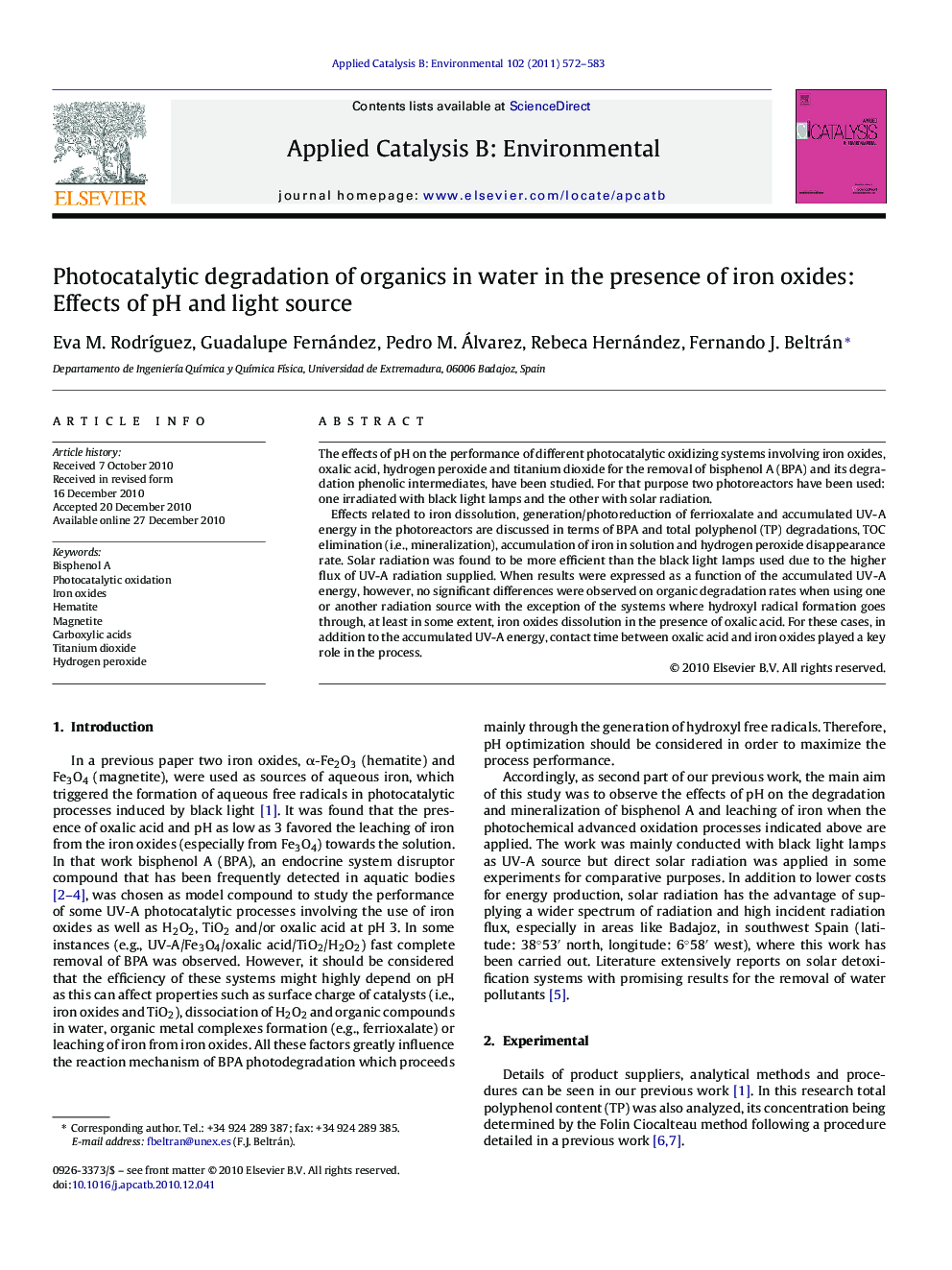| کد مقاله | کد نشریه | سال انتشار | مقاله انگلیسی | نسخه تمام متن |
|---|---|---|---|---|
| 47124 | 46459 | 2011 | 12 صفحه PDF | دانلود رایگان |

The effects of pH on the performance of different photocatalytic oxidizing systems involving iron oxides, oxalic acid, hydrogen peroxide and titanium dioxide for the removal of bisphenol A (BPA) and its degradation phenolic intermediates, have been studied. For that purpose two photoreactors have been used: one irradiated with black light lamps and the other with solar radiation.Effects related to iron dissolution, generation/photoreduction of ferrioxalate and accumulated UV-A energy in the photoreactors are discussed in terms of BPA and total polyphenol (TP) degradations, TOC elimination (i.e., mineralization), accumulation of iron in solution and hydrogen peroxide disappearance rate. Solar radiation was found to be more efficient than the black light lamps used due to the higher flux of UV-A radiation supplied. When results were expressed as a function of the accumulated UV-A energy, however, no significant differences were observed on organic degradation rates when using one or another radiation source with the exception of the systems where hydroxyl radical formation goes through, at least in some extent, iron oxides dissolution in the presence of oxalic acid. For these cases, in addition to the accumulated UV-A energy, contact time between oxalic acid and iron oxides played a key role in the process.
Figure optionsDownload as PowerPoint slideResearch highlights▶ The efficiency of the oxidizing systems (combinations of UV-A/iron oxides/oxalic acid/TiO2/H2O2) studied in the black light photoreactor have been classified. ▶ In the presence of solar radiation, BPA degradation rate increased due to the higher UV-A energy supplied in the CPC photoreactor. ▶ The performance of systems that do not require iron dissolution, directly depends on the accumulated UV-A energy in the photoreactor regardless of the source of radiation. ▶ For those systems requiring iron dissolution, the performance depends not only on the accumulated UV-A energy but also on the liquid-solid contact time. ▶ For the different systems tested, visible solar radiation does not seem to contribute to BPA degradation which is mainly due to UV radiation of wavelength lower than 400 nm.
Journal: Applied Catalysis B: Environmental - Volume 102, Issues 3–4, 22 February 2011, Pages 572–583